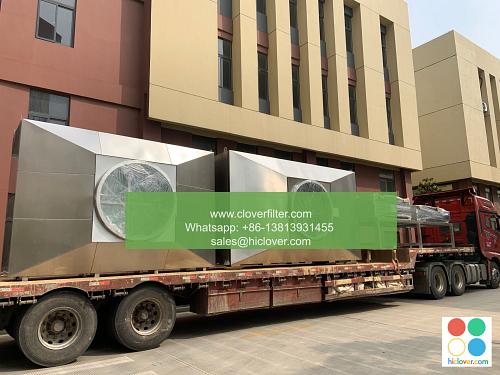Automatic Roll Air Filters in Ontario Cleanrooms: A Study on Airflow and Air Change Rates

Ontario cleanrooms are environments that require precise control over air quality to prevent contamination and maintain product integrity. One crucial component in achieving this control is the use of automatic roll air filters. These filters play a vital role in removing airborne particles and maintaining optimal airflow and air change rates within the cleanroom. This article delves into the significance of automatic roll air filters in Ontario cleanrooms, focusing on their impact on airflow and air change rates.
Automatic roll air filters are designed to automatically advance a new filter media when the existing one becomes saturated or reaches a predetermined level of efficiency loss. This mechanism ensures continuous filtration without the need for manual intervention, reducing downtime and minimizing the risk of human error. In the context of Ontario cleanrooms, where stringent regulations and standards are in place to ensure the quality of products manufactured, the reliability and efficiency of these filters are paramount.
Airflow within a cleanroom is critical as it directly affects the distribution and removal of particles. Automatic roll air filters contribute to maintaining a consistent and controlled airflow. By regularly replacing the filter medium, these systems prevent a decrease in airflow due to increased pressure drop across the filter. This consistency is essential for preventing turbulence and ensuring that airflow patterns within the cleanroom remain predictable and controlled, which is crucial for the removal of particles and the prevention of contamination.
Air change rates, which refer to the number of times the air in a cleanroom is completely replaced by filtered air per hour, are another critical factor in cleanroom design and operation. Higher air change rates can lead to more effective removal of airborne contaminants, but they also increase the energy consumption and can affect the temperature and humidity levels within the cleanroom. Automatic roll air filters can help in achieving and maintaining high air change rates by ensuring that the filtration system operates at optimal efficiency at all times. This is particularly important in cleanrooms where sensitive processes are carried out, and the control of airborne particles is crucial for product quality and safety.
In Ontario, cleanroom operators must comply with various standards and guidelines, including those set by the International Organization for Standardization (ISO) and the Good Manufacturing Practice (GMP) guidelines for the pharmaceutical and biotechnology industries. These standards often specify requirements for air cleanliness, airflow, and air change rates within cleanrooms. The use of automatic roll air filters can significantly contribute to meeting these requirements by providing a consistent and reliable means of controlling airborne contamination.
The selection and installation of automatic roll air filters in Ontario cleanrooms should be based on careful consideration of the specific cleanroom classification, the nature of the processes being carried out, and the overall cleanroom design. Factors such as the filter’s efficiency, the rate of filter medium replacement, and the system’s ability to integrate with existing HVAC and control systems must be evaluated. Regular maintenance and monitoring of these systems are also crucial to ensure they operate at optimal levels and provide the required level of air quality control.
In conclusion, automatic roll air filters play a vital role in maintaining the air quality in Ontario cleanrooms by ensuring consistent airflow and facilitating the achievement of required air change rates. Their ability to automatically replace filter media minimizes downtime and maintains filtration efficiency, which is critical for controlling airborne contamination and meeting regulatory standards. As cleanroom technology continues to evolve, the importance of these filters will likely grow, underscoring the need for ongoing research and development to improve their efficiency and effectiveness.
FAQs
Q: What are automatic roll air filters, and how do they work?
A: Automatic roll air filters are systems designed to automatically replace the filter medium when it becomes saturated, ensuring continuous and efficient filtration without manual intervention.
Q: Why are air change rates important in cleanrooms?
A: Air change rates are crucial for the effective removal of airborne contaminants. Higher air change rates can lead to cleaner air but also increase energy consumption and can affect temperature and humidity levels.
Q: How do automatic roll air filters contribute to meeting cleanroom standards in Ontario?
A: By providing a consistent and reliable means of controlling airborne contamination, automatic roll air filters help cleanroom operators meet the stringent standards set by ISO and GMP guidelines.
Q: What factors should be considered when selecting automatic roll air filters for Ontario cleanrooms?
A: The selection should be based on the cleanroom classification, process requirements, filter efficiency, replacement rate, and integration with existing systems, along with regular maintenance and monitoring.

